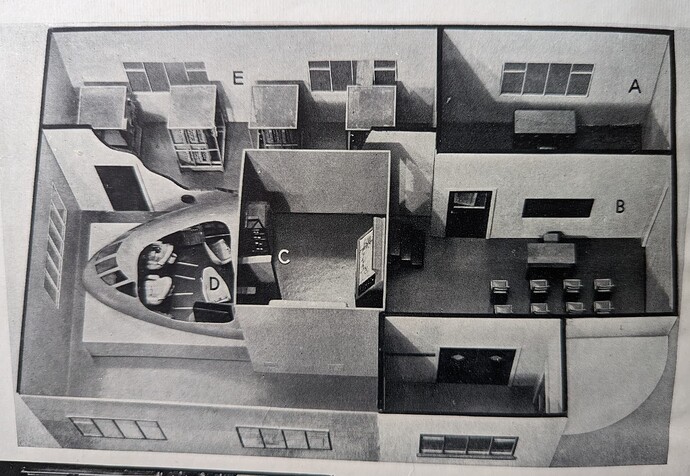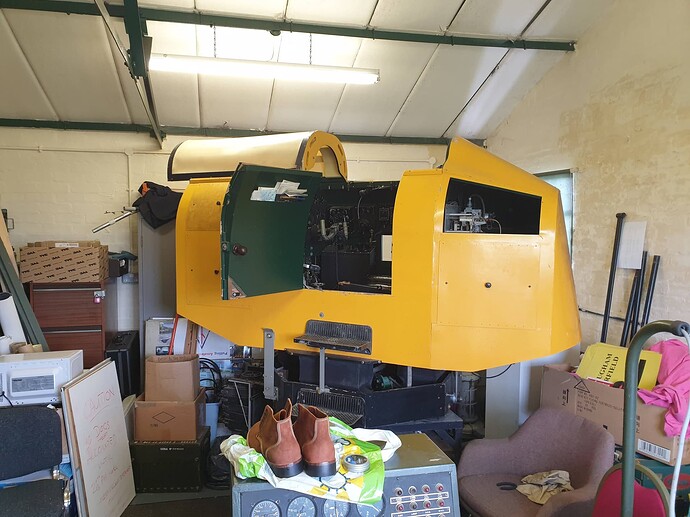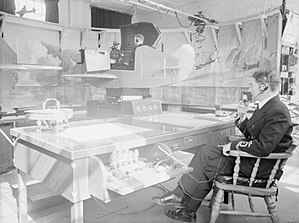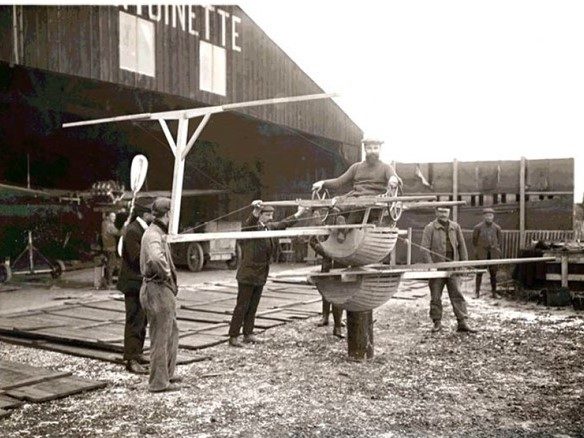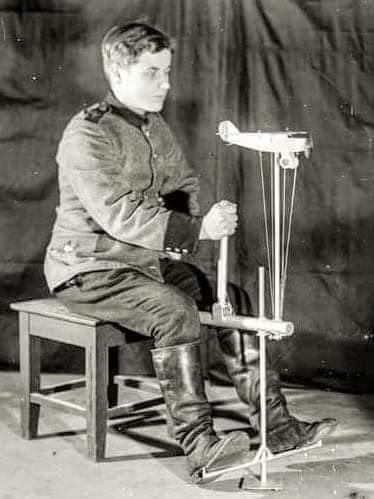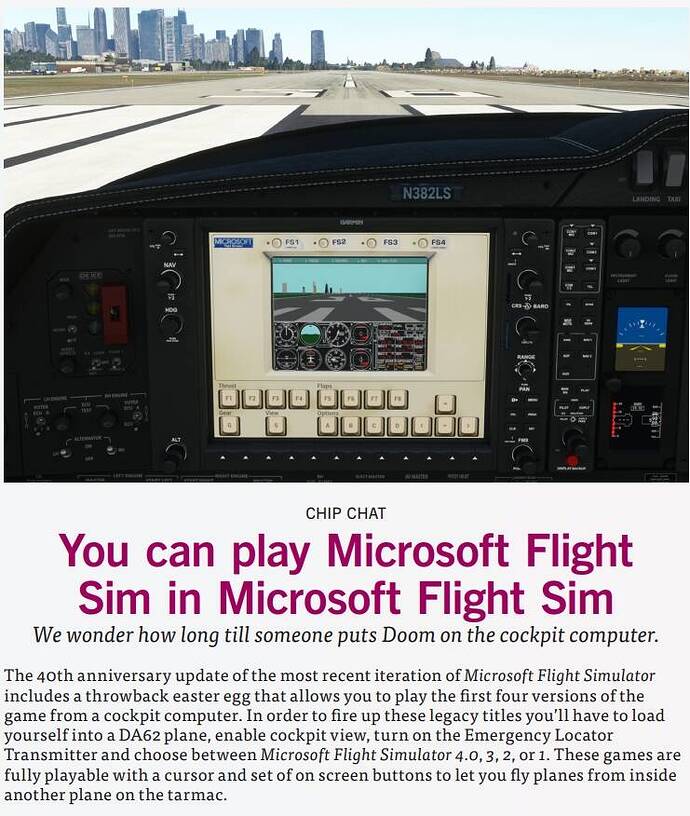A friend has just lent me his copy of “Modern British Aeroplanes”, published as part of the “Boys’ Power and Speed Library” and given to him for Christmas in 1953.
It is a fascinating snapshot of the state of British aviation at the time and includes this image and caption:
A “Flying Schoolroom”. The Comet Flight Simulator used by B.O.A.C. to give pilots and crew full experience without leaving the ground. Such simulators save many hours of expensive flying, and long “journeys” can be made which simulate, in every way, the “real thing”, even down to the squeal of the brakes when landing. All kinds of emergencies can also be created to test the crews reactions without actual risk to either themselves or the aircraft.
A. Chief Instructor’s Office
B. Briefing room
C. Instructional area
D. Simulator
E. Computers responsible for presenting the readings of the instruments
Courtesy: Redifon, Ltd*
I don’t know about anyone else but I find it staggering that 50 years later, we can all sit in front of a home computer or games console, more powerful than anything available to Redifon Ltd, and a screen, and be presented with a simulation not just of “instruments and brake squeal” but multiple aircraft and their systems, aerodynamics, weather, lighting, airports, air and ship traffic, cities and POIs, and the entire planet over which we fly.
My thanks go to everyone involved in the hardware and software innovations of the last fifty years, plus those in Microsoft, Asobo and the third party developer ecosystem, who have made this hobby possible.
17 Likes
Early visuals used terrain boards.
https://ids.si.edu/ids/deliveryService?id=NASM-A19890001000cp04
The first visual simulator I flew had a huge room in which the terrain board was housed. Need to fly in a different location, the techs had to disassemble one terrain board and assemble another board. The people who built these were model railroad hobbyists. More than one pilot got in trouble for low-level antics that crashed the moving camera into the terrain board. Trying to fly under a bridge could cost thousands of dollars in damage to the board and camera assembly.
8 Likes
That’s amazing, I had no idea that was another step along the way. Will keep it in mind the next time I try diving under a bridge!
1 Like
We had to flight freeze once to have a spider removed from the approach end of the runway. Gives a whole new meaning to FOD, not to mention the spider looked huge from the cockpit, like some 1960s horror movie.
8 Likes
There must be someone out there that can create a freeware, study level, outsized, spider to recreate the experience.
5 Likes
I wish I could find it. I remember someone a long time ago had posted a pic of a WWI biplane flight trainer. It was basically a wooden contraption with a stick and pedals and a small model plane attached to it. Pilots would train on the controls and see how the model airplane reacted. It seems like such a crude, yet genius way of training pilots for biplanes in WWI.
If anyone happens to know what I’m talking about and has that pic, please post it! I’ve been combing Google for the last 20 mins with every search term I can think of and can’t find that pic. But I know it’s out there…
2 Likes
I think I know the one you mean, will see if I can find it as well. In the meantime, another missing link (pardon the pun) is the Link Trainer.
This one is complete and functioning in the 94th Bomb Group museum at the old 8th Air Force airfield at Rougham in Suffolk in the UK.
Unfortunately the room was not big enough to get whole set up in the shot but you can see the instruments in the box under the boots, and it is connected to the original plotting table that tracked the “flight” across a map of the local area.
3 Likes
I still haven’t found it either but have discovered the hand-powered Antoinette simulator from 1910.
5 Likes
Awesome. Man, we’ve REALLY come a long way.
And I’ve been searching for that pic as well. I know it’s been posted here on the forum before a LONG time ago. I just can’t seem to locate it here either.
1 Like
I think so, and it helps to put some of the debates on the forum and elsewhere into perspective.
2 Likes
lol Indeed. I always say that MSFS is the simulator I’ve been waiting on for over 30 years. But then I look at stuff like this, and it makes me realize that even 30 years ago, the fact I could load up Falcon 3.0 on my 386 in my own house, fly various sorties, and even connect with a friend to do it is kind of mind blowing and such a huge leap over what we see in these photos.
2 Likes
Those were the days my friend…

8 Likes
YESSSSSS!!! That was the image I was talking about! I knew someone would come through eventually.
3 Likes
A sim within a sim. Simception…
4 Likes
I’d forgotten about that one! 
I knew that was the one one you meant - now we’ll never have to hunt for it again! Thanks @UnivalveSaucer7. 

These images seem to have a way of appearing when required. 
1 Like
No the cables stretched over time and became slack. This induced control lag and the plane “stuttered” when the pilot trainee had to constantly over-correct.
3 Likes
